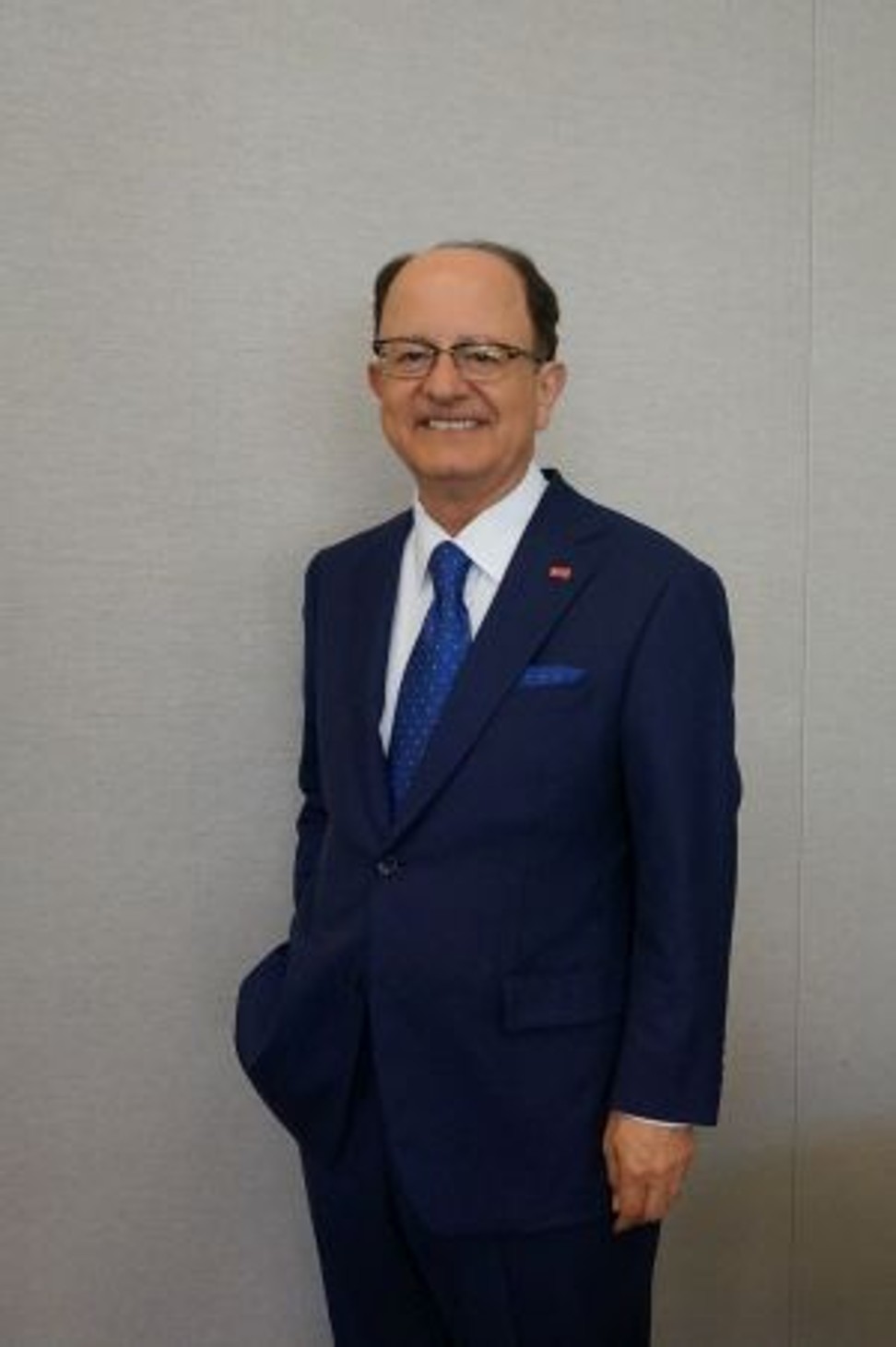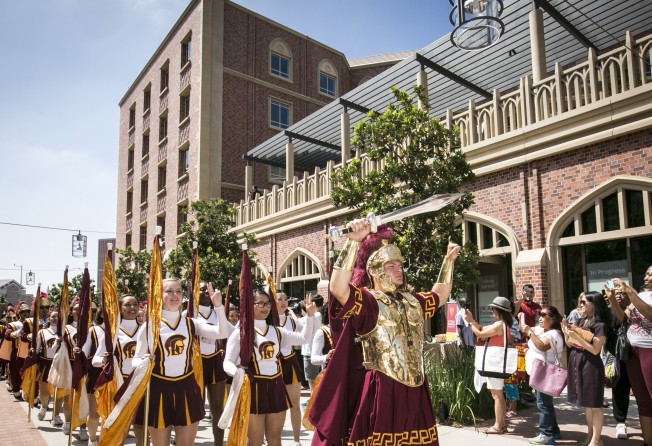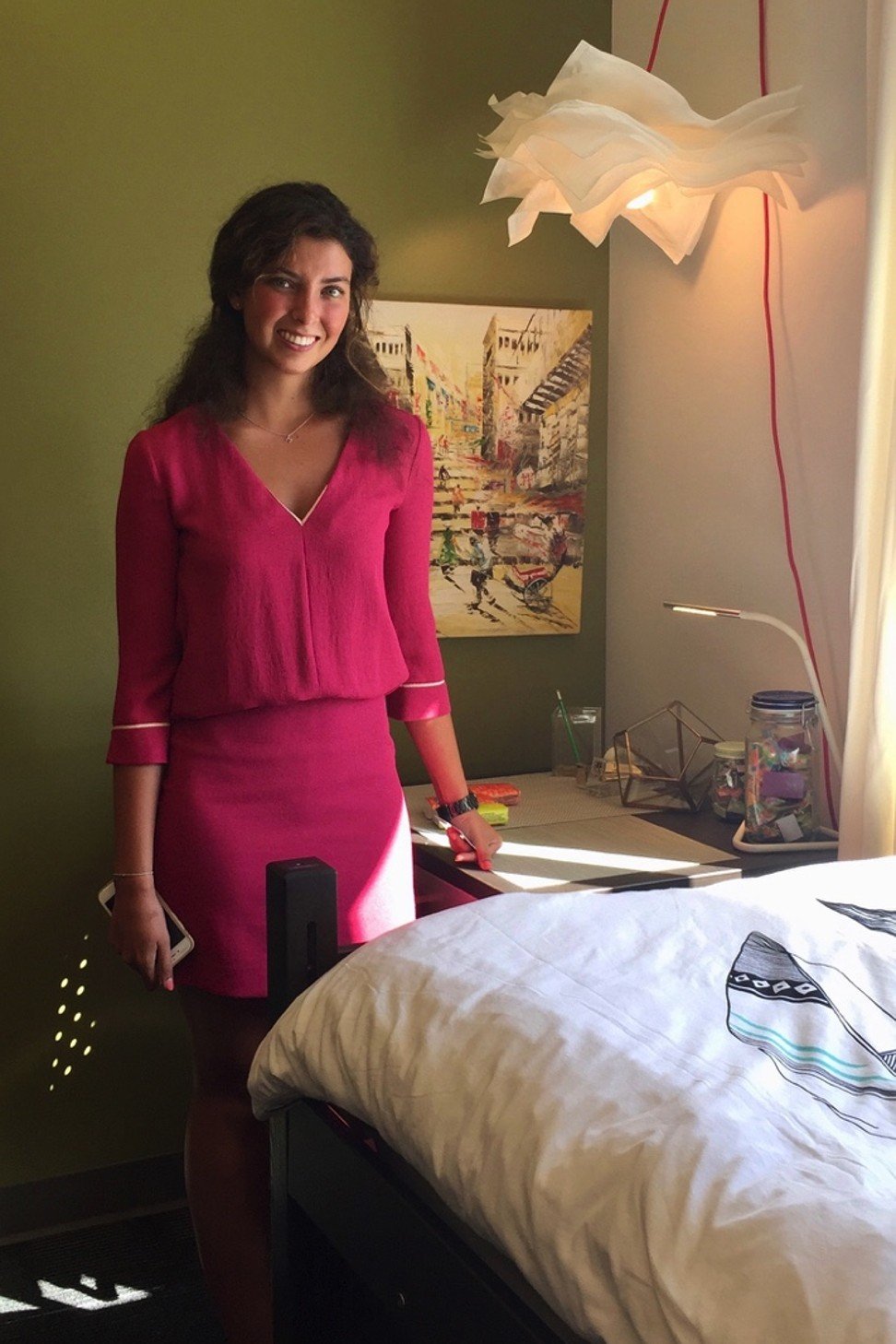
University of Southern California opens new US$700m global village to connect with LA community
A new 15-acre residential village at the University of Southern California fosters ties with the local Los Angeles community and with students from Hong Kong

In late summer, thousands of Trojans – the nickname for students at the University of Southern California (USC) – together with parents, faculty members and an exuberant marching band turned out to celebrate the opening of USC Village. The US$700 million project is set to house 2,500 students in eight residential colleges, with a full range of amenities, stores and restaurants also offering new options and attractions for members of the local community.
The man behind the project is USC president Max Nikias, who explains that the university bought the land some twenty years ago when it was the site of a shopping mall. The feeling grew, though, that a better range of accommodation was needed for students, and plans took shape accordingly.

“We felt that for USC in the 21st century, we needed to provide a first-class residential life for students,” says Nikias, who became the university’s 11th president in 2010. “That was really the dream, the vision, in building the village.”
Construction at the site, which is located on Jefferson Boulevard right opposite the main campus, took just three years to complete. At all points, a key principle was to reach out to neighbours and the local community to make them part of the process. One benefit of this approach was that, when the Los Angeles city council came to vote on the proposal, 890 people from the neighbourhood showed up at city hall to voice their support.
In line with this partnership concept, USC has fully financed a new fire station for the district, “beautified” the streets, and put up US$20 million to fund affordable housing. Besides having 103,000 square feet of stores and service outlets, the village will also include a computer training centre open to the public.
“We are creating a new kind of community, which will be educational for USC and, especially, for our students,” Nikias says.

In terms of design, the architecture is a combination of “collegiate Gothic” and Romanesque to reflect the distinctive look of the Fiscal Education building at the heart of the campus, which dates back to the 1920s. Nikias, an engineer with classics and arts background, says, partly in jest, that this will give the new village a redefined 21st century look and 1,000 years of history.
At the opening ceremony, a 20-foot-tall bronze statue of Hecuba, Queen of Troy, was unveiled in a prominent spot at the Central Piazza. This was not just a nod to USC’s “Trojan” tradition, but something more.
“I felt very strongly that we needed a symbol of Troy and, in particular, to celebrate the women of Troy,” Nikias says. “We have good football and basketball teams, but in women’s sports, we have national champions in soccer and beach volleyball.”
Warming to the theme of the Trojans’ sporting successes, he also noted USC’s Olympic heritage, stretching from 1904 up to Rio in 2016, which has produced more medal winners – 309 representing over 25 different countries - than any other university in the world.
“Sports help to create the Trojan spirit, but it is also a function of residential life on campus,” Nikias says. “Therefore, the new village is going to be very welcoming, something like the ivory tower meets the town square. It will be a place where everyone can come together.”
Thinking back to his days as a postgraduate student in London, he is particularly happy to see an Irish pub has opened. For him, that represents just the kind of gathering place where it is easy to make friends and feel at home.
At present, about 15 per cent of USC undergraduates are from overseas, and the university has strong ties with Hong Kong. In fact, it was the first city in Asia where USC arranged high school visits to assess candidates, back in 2001. Since then, the initiative has spread to cities in China, Taiwan, South Korea, and countries in Southeast Asia.
“We’re agnostic about which curriculum the schools use,” says Katherine Harrington, USC vice president for admissions and planning and dean of academic records. “We have the ability to evaluate high school performance regardless of the education system – be it IB (International Baccalaureate), A-Level, or an American system. We have also got better at that as we have recruited more broadly outside the US.”
According to Timothy Brunold, the university’s dean of admissions, an applicant’s academic performance is important, but not everything.
“Frankly, we are looking for the best students, but academic excellence isn’t the only thing we consider,” he says. “We look holistically, and think about how the student might fit in at USC and what they could contribute in the classroom. Simply being smart or diligent is not always enough.”
Brunold adds that, during high school visits, his team identifies good candidates, but also ensures they know about USC and what makes it special.

“It is better to deliver the message ourselves,” says Brunold, who is a regular visitor to Hong Kong. “We don’t leave it to hearsay or to what people can find on the internet.”
USC has a team of five who oversee admissions from international markets, with close to 50 support staff. This makes it one of the largest admission offices of any American college or university. By travelling, they give candidates the chance to talk to someone who will decide on their application.
Both Harrington and Brunold note that students from Hong Kong tend to make a smoother transition to USC campus life and culture than many others.

“Hong Kong is so cosmopolitan; it’s a mix, just like LA,” Harrington says. “But I think transition is more to do with where students are in terms of development than where they come from.”
The more popular choices among Hong Kong students include “traditional” subjects like business, engineering and economics, but others like communications and journalism are gaining ground.
Brunold also suggests that students consider taking a minor or doing a double degree in a completely different discipline.
“There’s great value in studying business and biology, or business and art history,” he says. “At a basic level, some combinations might not make sense, but when you dive a little deeper, you see how much value it adds. This is a key to USC’s academic philosophy.”
He adds that this kind of diversity and flexibility within the US higher education system is what makes it a preferred destination for international students, ahead of countries like Britain, Australia and Canada.
Students from Hong Kong
Margaux Gjurasic, who attended the ESF’s Discovery School in Hong Kong, is in her sophomore year at USC studying international relations and global business, with a double major in public relations.
After taking classes in Rome during her first semester, she then opted for an internship with International Idea, a Brussels-based think-tank that works on democracy and voting systems in the European Union.

“As a freshman, I don’t think other students would have that opportunity,” says Gjurasic, whose parents are French and American.
This year, she is one of the first students to take up residence in the USC Village and looks forward to experiencing the sense of community.
She expects a typical day to start with an early morning workout at the new gym, followed by three classes from 9am on. There is usually one more class after lunch. Otherwise, she will usually head to the library.
“There are lectures and discussions led by teaching assistants,” she says. “It’s great to have small group discussions where you can voice your opinions and debate. I also take part in a pre-law fraternity, spending five hours a week with a group interested in going to law school. That is really interesting because I’m not yet sure, but law is one of the careers I’m interested in pursuing.”
With that in mind, she landed an internship with Robert Lee, one of the first Koreans to run for Congress in Los Angeles. She has also been inspired to pursue other goals, exemplifying the “Fight On” message of USC’s official song.
“Whatever the students here study, whatever they do, they work hard,” she says. “Even if something doesn’t turn out the way they want, they keep fighting on.”
For Natalie Wong Mon-ting, another Trojan from Hong Kong, the overall USC experience has included much she didn’t imagine.
“You find your strengths and weaknesses here, and it allows you to meet so many new people,” she says.
Wong graduated with an IB diploma from Renaissance College and is now studying for a degree at the School of Cinematic Arts, whose alumni include Stacey Sher, producer of Tarantino’s Pulp Fiction and, singer-songwriter Macy Gray. Wong’s own career ambitions are steadily coming into focus.
“I want to tell stories that are personal to me, which I feel would involve Hong Kong in a big way. I would like to write for TV or to produce TV shows or movies.”
She notes that, in her course, class sizes are small, and with fewer than 30 people in her major, it is possible to build close bonds over the four years. Most classes last for three hours, with one or two per day. Some centre on first watching a movie and then having a detailed discussion covering the technical and creative aspects. There are also workshops on film analysis which require a lot of collaboration.
“It is very different from the lecture style I was used to in high school,” Wong says.